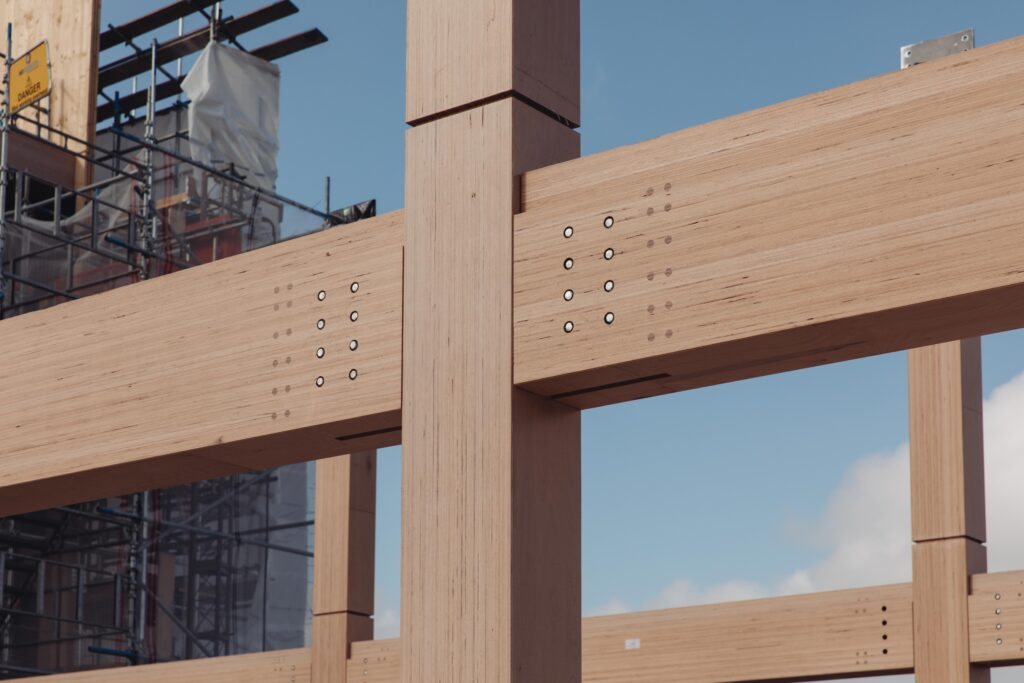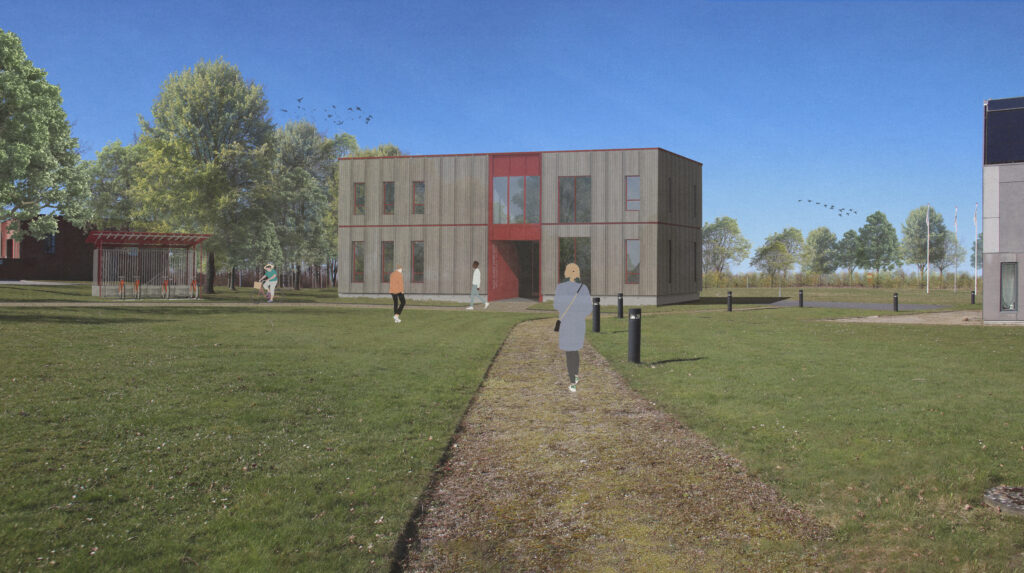Wood is well-suited for system thinking
As prefabricated products, engineered timber materials are well suited to system thinking. Production of repeated identical components is a straightforward process, one which can be easily optimised in terms of manufacture, transport, and installation. Connections are typically mechanical, making it easier to imagine and plan for the demounting and re-use of prefabricated mass timber components at the end of a building’s useful life.
Typically, buildings are uniquely designed for a given project, be that in timber or otherwise. Whilst any building will likely comprise familiar elements, such as columns, beams, and walls, these are usually designed and sized individually for the specific scenario. This approach can be time and labour intensive for both design and construction, often leaving insufficient time and resources for optimisation of material efficiency.
Conversely, by using a system of components, efficient design solutions can be developed in a fraction of the time. However, it is essential to understand for what purpose a given system has been developed to ensure it is appropriate for the needs of a particular project.
High efficiency where structural demands are limited
Historically, light timber frames represent a widely adopted approach to low rise construction, usually limited to buildings of up to 4 stories. Whilst this type of system is restricted in its structural capacity compared to mass timber elements, it is important that light timber framing as a system is not overlooked due to its material efficiency.
For low rise construction or for non-loadbearing elements of high-rise projects, light timber frames offer an excellent opportunity for material, cost, and space savings. It is important to understand the distinction between the performance of light and mass timber frames and to ensure that details and solutions appropriate to each are applied respectively.
Light timber frames typically use simple sawn timber sections of varying qualities but can also comprise small LVL sections or engineered profiles (such as I-joists) to reduce the size of individual frame members or to increase their strength and stability.
Depending on the use of the frame, the space between posts can be filled with insulation to increase thermal and/or acoustic performance. The frame can be lined with various boards to provide structural racking and other necessary performance criteria, such as fire.
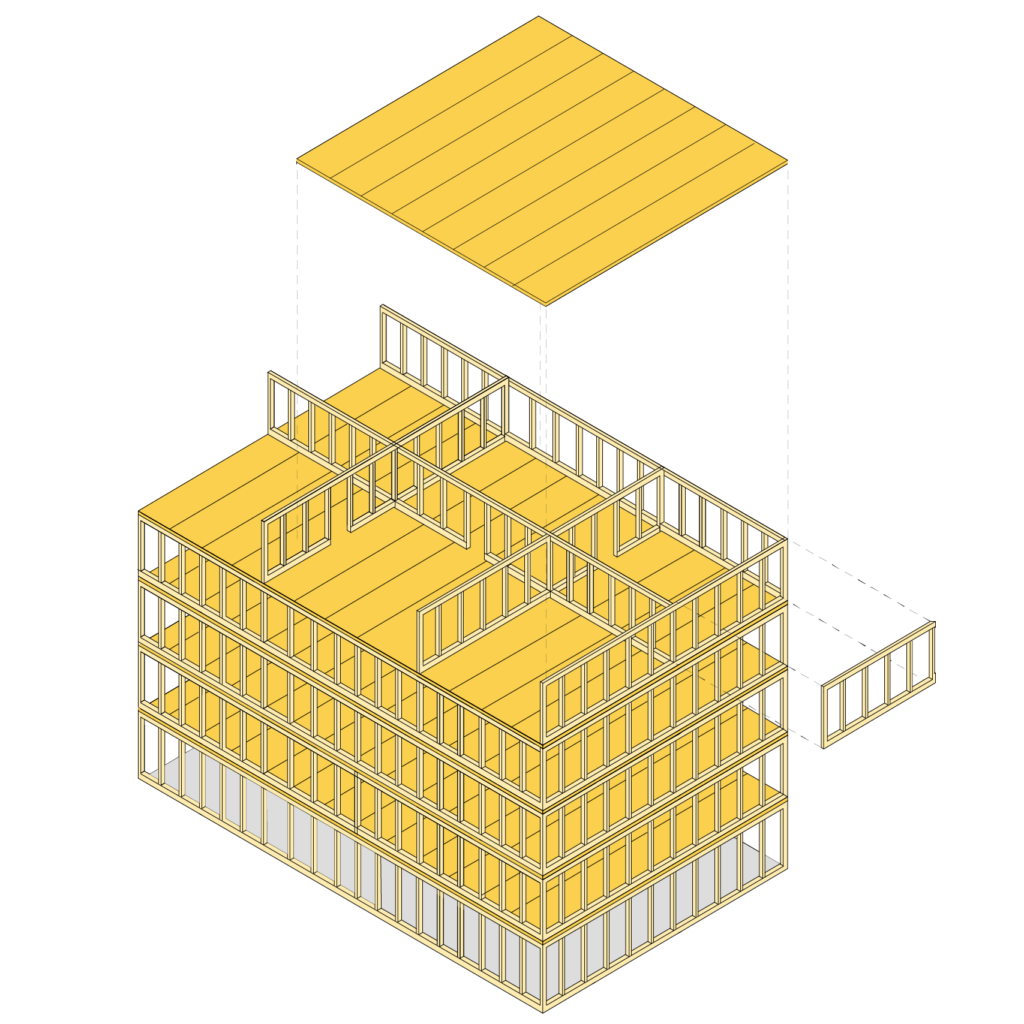
Materially optimised for flexible large-scale buildings
Post & beam structures comprise floor slabs that span between parallel sets of horizontal beams, distributing the loads from each floor onto a grid of vertical columns. These structures result in large open-plan floor plates that are flexible to accommodate change throughout the building’s life.
Post & beam is often the most appropriate and versatile solution for larger scale building types (5+ stories). However, in instances where minimal floor depths are required this approach may not be suitable due to the down stand beams.
The columns and beams of mass timber buildings are typically made of glulam, which is available in various strengths which impact the component size. Where smaller elements are required, LVL can also be considered. The floor slabs are typically made of cross laminated timber, however, composite rib decks or cassettes can be investigated for spans exceeding 7m, to ensure a materially efficient solution.

Reduced floor depth through omission of beams
Similarly to post & beam, post & slab structures distribute their vertical loads as point loads using a grid of slender columns, leading to open and flexible floor plates.
In a post & slab structure, the two-way spanning ability of the floor slabs is used to remove the need for primary beams, with the horizontal loads distributed directly from the floor into the columns themselves.
This reduces the floor build-up’s depth by removing down stand beams; however, this can also limit the distance between the columns. Complex and potentially costly connectors are often needed to aid the distribution of the floor loads into the columns.
The materials used for mass timber post & slab projects are generally consistent with those of post & beam; glulam or LVL columns with CLT floor slabs.
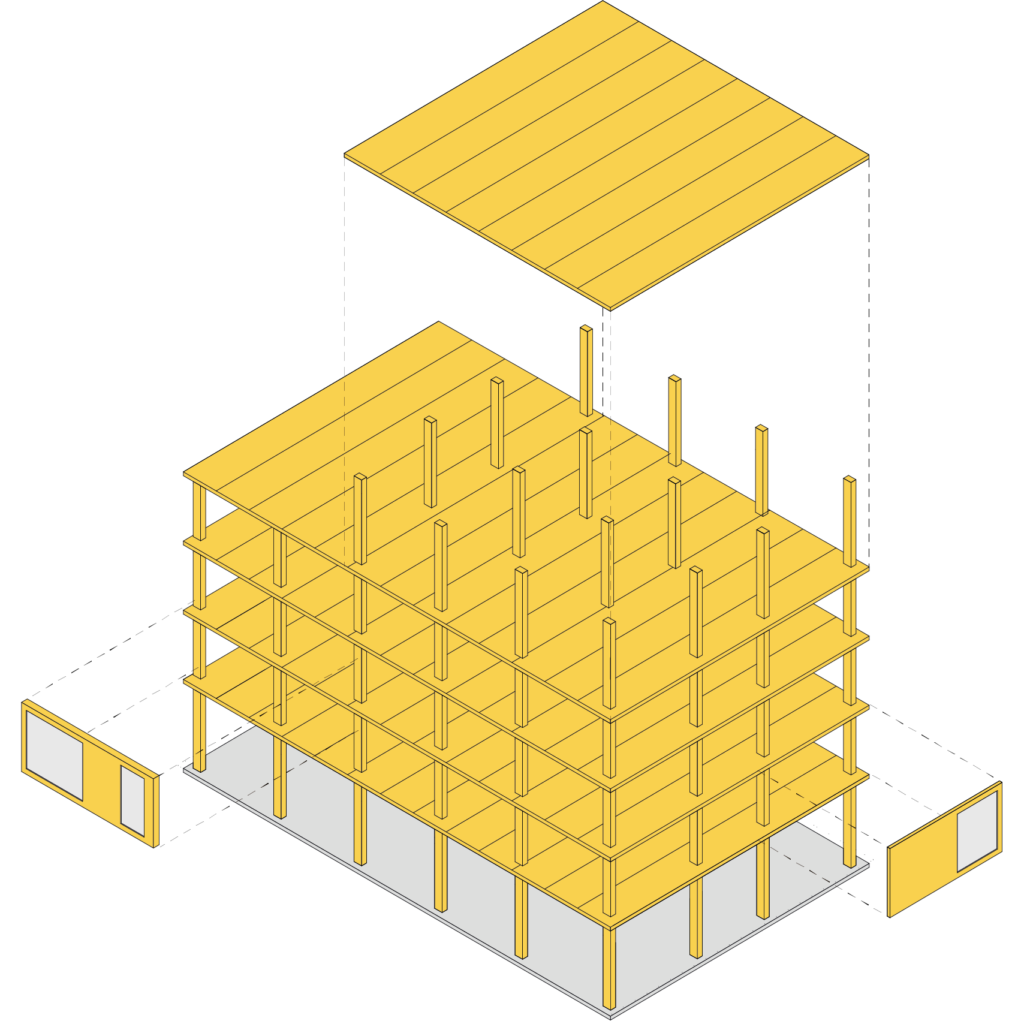
A planar approach for the creation of cellular spaces
In honeycomb structures, plates are used as walls and floors to distribute both horizontal and vertical line loads, often made of the same material.
This approach can lead to comparatively slender wall and floor build-ups but can also result in redundancy within the structure as load paths are more complex to predict, meaning material is applied where it is sometimes not needed.
Honeycomb structures have inherent shear capacity due to their planar approach. Using a solid structural material for the walls can be beneficial for various performance criteria but limits the future flexibility of the spaces created, as these will be cellular in nature and not able to be easily changed or adapted compared to their non-loadbearing alternative.
Honeycomb structures typically use cross laminated timber for both wall and floor components.
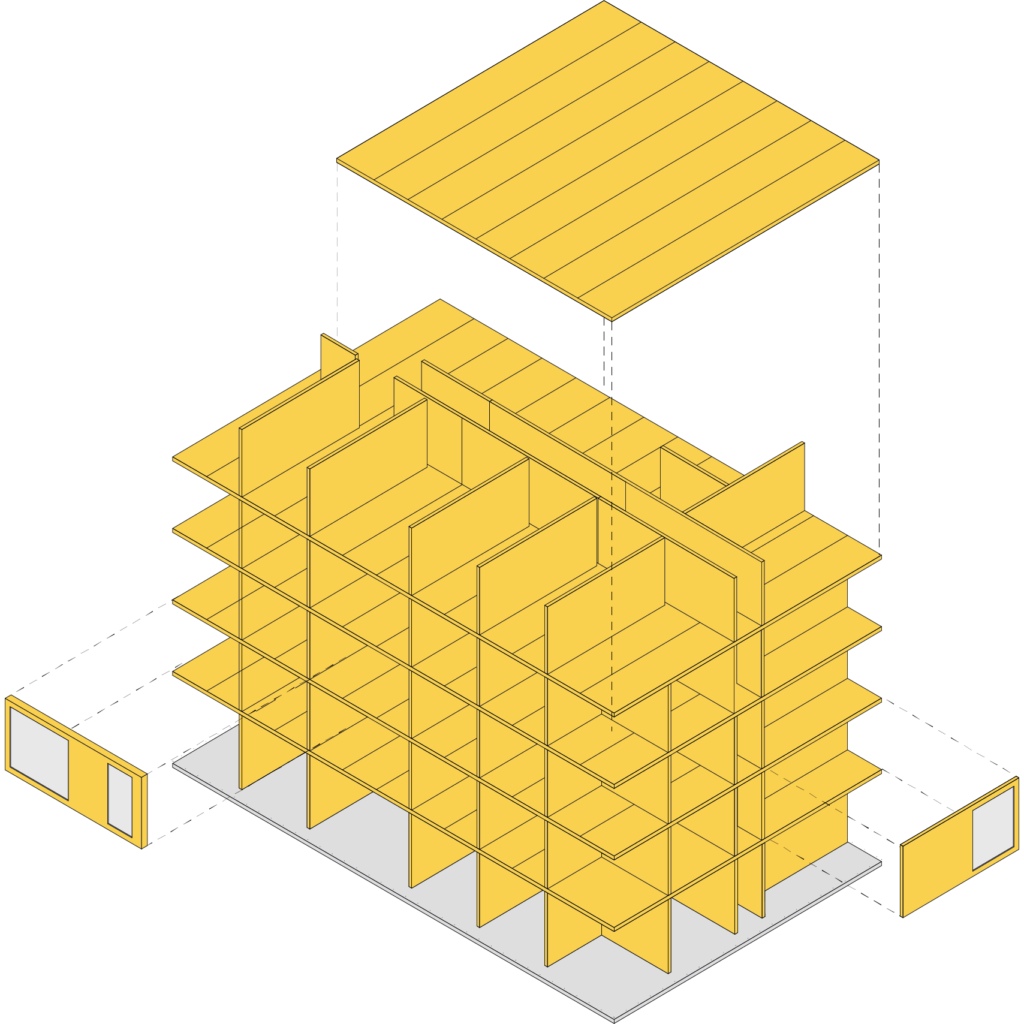
Achieving the highest level of prefabrication
In volumetric construction, three dimensional spaces are fully finished within a factory and transported to site for installation. This process promises higher quality and precision, whilst also providing a safe and efficient working environment. Internal configurations are heavily influenced by transport and manufacturing restrictions, in turn leading to reduced design flexibility.
Transported as complete ‘spaces’, the number and subsequent cost of deliveries is also higher than for other ‘flat pack’ construction types. In addition, each module must have its own inherent stability during manufacture, transport, and installation, meaning material efficiency is reduced compared to a site assembled approach, with redundant material inevitably present in the final ‘in-situ’ position.
Combining modular components within a more conventional site assembled approach, can help to limit the restrictions of volumetric construction on internal layout and transportation. A common example of this is prefabricated ‘wet rooms’ for bathrooms, where it is extremely beneficial to undertake a high level of servicing and finishes under factory conditions, saving time on site and improving quality overall.
In timber construction, volumetric structures can either use light timber frames, for components which are non-load-bearing components or with modest structural demands, or alternatively mass timber, such as CLT, on larger scale buildings. Modules using columns are theoretically possible but require sacrificial ‘bracing’ for shear/stability during transportation and installation, making them relatively uncommon.


